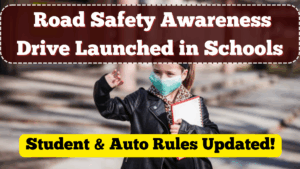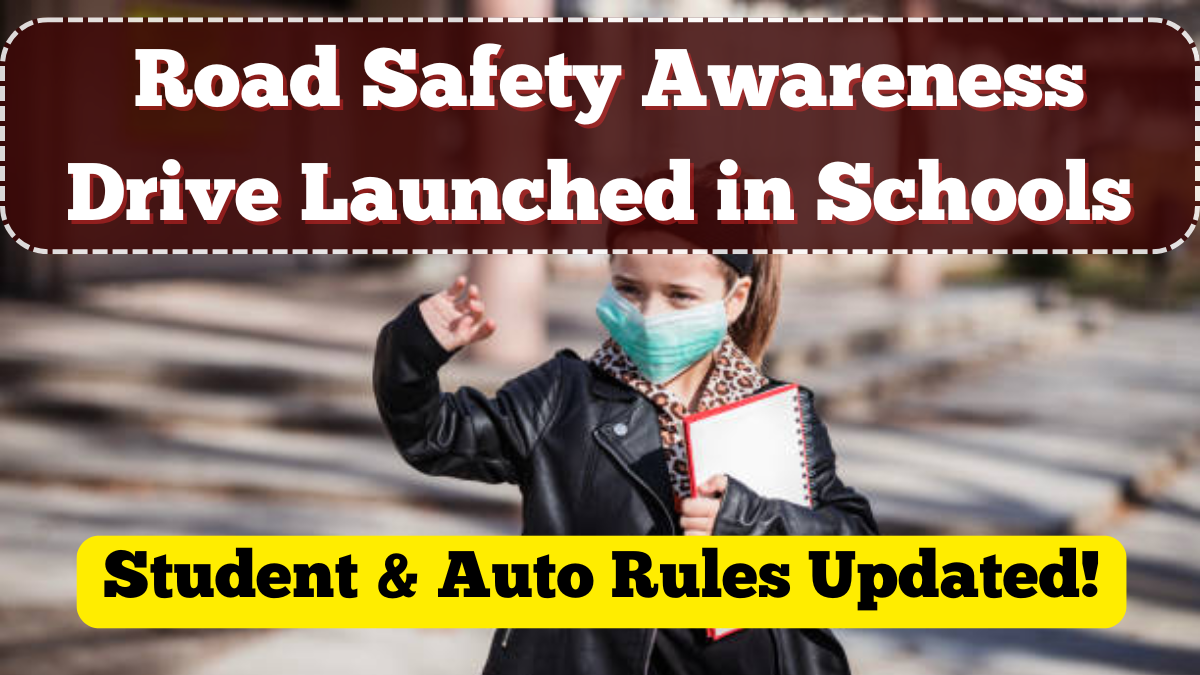In a major initiative toward child protection and traffic discipline, the Indian government has rolled out a road safety awareness India campaign targeting schools nationwide. This campaign, launched in June 2025, involves mandatory sessions, street-side drills, and new traffic rules around school zones.
The campaign aims to promote safety among students, auto drivers, and parents while also reducing accidents near educational institutions. With growing cases of road mishaps involving school children, this awareness movement is timely and necessary.
The road safety awareness India program is being implemented by the Ministry of Road Transport and Highways in partnership with local traffic police, NGOs, and school boards across all states.

What the Road Safety Campaign Includes
The government’s road safety awareness India drive brings several structured activities and regulations into school life. These include:
-
Weekly traffic awareness sessions by traffic police or certified instructors.
-
Interactive learning kits on traffic symbols, signals, zebra crossings, and safe walking habits.
-
Helmet rule awareness for students using bicycles or riding pillion on two-wheelers.
-
Street-side practical drills in collaboration with local RTO officers.
-
Parent engagement sessions on safe student drop-offs and pickup regulations.
The Ministry has made it mandatory for every school to include road safety in morning assemblies and extracurricular programs throughout the academic year.
New Auto and Traffic Rules Around School Zones
As part of the road safety awareness India movement, several new rules are now enforced around school premises:
-
Speed limit of 20 km/h in designated school zones during school hours.
-
No-horn zones implemented within 100 meters of any school building.
-
Mandatory zebra crossings with signboards at all school entrances.
-
Auto rickshaws carrying students must follow passenger limits strictly.
-
Guardians must use helmets if riding with their children on two-wheelers.
These rules are monitored daily, with penalties issued on the spot for violators. Police have been instructed to increase vigilance during school opening and closing hours.
Why the Campaign Was Introduced
The road safety awareness India drive stems from alarming statistics in recent years:
-
Over 14,000 school-age children were involved in road accidents in India in 2023.
-
Many cases involved overloaded autos, helmetless pillion riders, and unsafe road crossings.
-
A study found that students in Classes 6 to 12 were most at risk due to unsupervised commutes.
In response, this initiative places responsibility not only on students but also on school authorities, drivers, and guardians to ensure total compliance with safety norms.
Impact on Students and School Management
The road safety awareness India campaign is already showing early success in its pilot rollouts:
-
Students are now actively participating in helmet pledge campaigns and road safety quizzes.
-
Schools are forming student traffic clubs to promote peer learning and discipline.
-
Traffic police report fewer violations in zones where the campaign has been running for over a month.
-
Many schools have updated their bus and van route safety checks to align with the new policy.
Principals across cities like Delhi, Mumbai, and Bengaluru have praised the initiative for encouraging safety-first behavior in school-aged children.
Long-Term Plan and Expansion Goals
The government intends to integrate the road safety awareness India program into the regular CBSE and State Board curriculum by 2026. Future goals include:
-
Introducing traffic education as a subject in Classes 8 to 10.
-
Training school bus drivers through certified safety workshops.
-
Developing a mobile app for students to report safety violations anonymously.
This strategic investment in awareness and accountability is aimed at building a safer generation of commuters and responsible road users.
FAQs
Who is leading the road safety awareness India campaign?
The initiative is led by the Ministry of Road Transport and Highways with support from local authorities, RTOs, and school boards.
Is the campaign applicable to private schools?
Yes, all government and private schools must implement the campaign as per the new education guidelines.
What are the penalties for violating school zone traffic rules?
Violators may face fines, license points, and school-issued warnings, depending on the severity of the rule broken.
Are students required to wear helmets?
Yes, students riding bicycles or pillion on two-wheelers must wear helmets to school.
Will this campaign be made part of the school syllabus?
Yes, from 2026, road safety awareness will be introduced as part of formal curriculum activities in selected grades.
Click here to know more.
